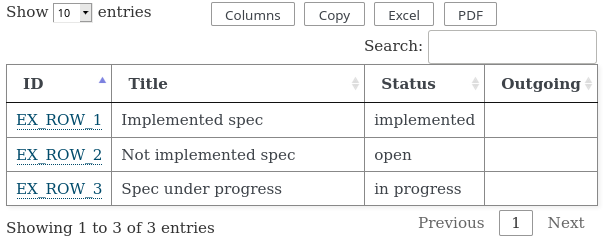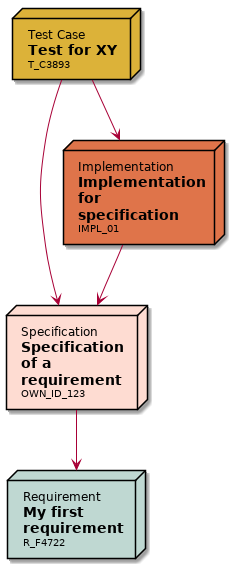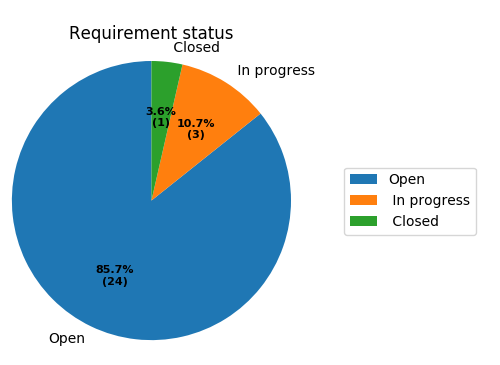Complete documentation: http://sphinx-needs.readthedocs.io/en/latest/
Attention: sphinxcontrib-needs got renamed to sphinx-needs. This affects also the URLs for documentation and repository:
- Docs: https://sphinx-needs.readthedocs.io/en/latest/
- Repo: https://github.com/useblocks/sphinx-needs
Sphinx-Needs allows the definition, linking and filtering of class-like need-objects, which are by default:
- requirements
- specifications
- implementations
- test cases.
This list can be easily customized via configuration (for instance to support bugs or user stories).
A default requirement need looks like:
Layout and style of needs can be highly customized, so that a need can also look like:
Take a look into our Examples for more
pictures and ideas how to use Sphinx-Needs.
For filtering and analyzing needs, Sphinx-Needs provides different, powerful possibilities:
| needtable | needflow | needpie |
|---|---|---|

|

|

|
pip install sphinx-needsIf you wish to also use the plotting features of sphinx-needs (see needbar and needpie), you need to also install matplotlib, which is available via the plotting extra:
pip install sphinx-needs[plotting]Note
Prior version 1.0.1 the package was named sphinxcontrib-needs.
git clone https://github.com/useblocks/sphinx-needs
cd sphinx-needs
pip install .For final activation, please add sphinx_needs to the project's extension list of your conf.py file.
extensions = ["sphinx_needs",]Note
Prior version 1.0.1 the extensions was called sphinxcontrib.needs.

